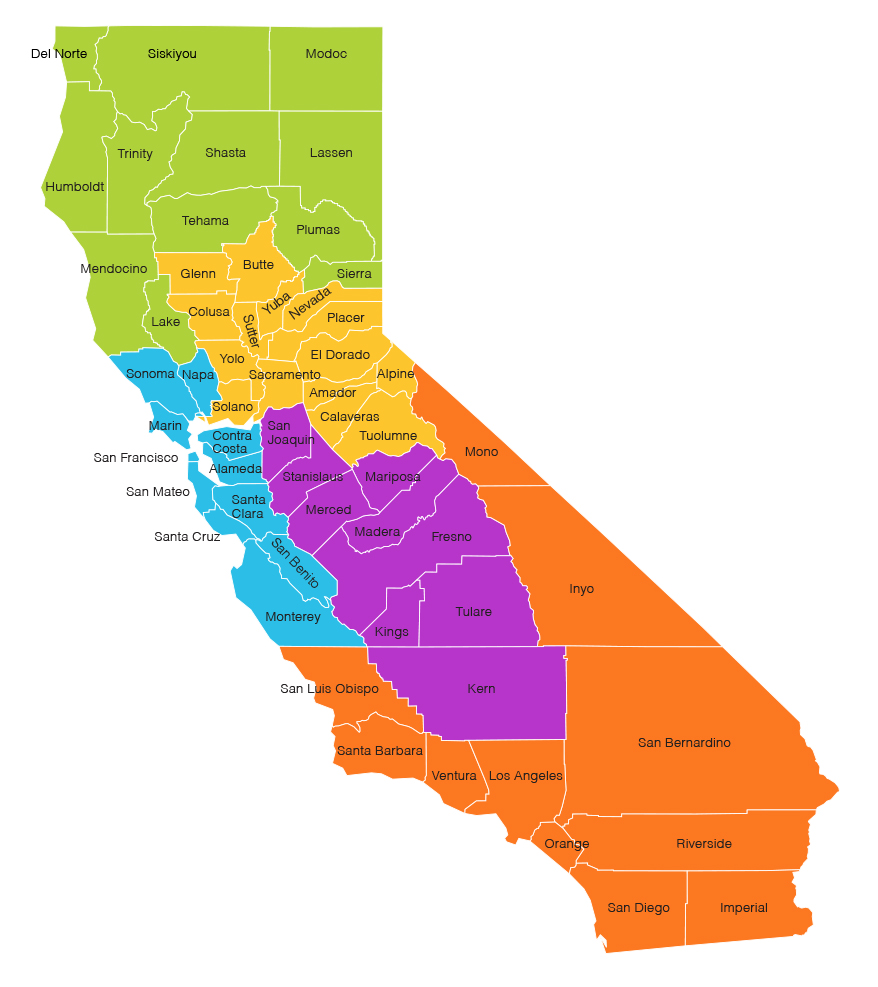How Many Counties Does California Have? Everything You Need to Know

Trying to find out how many counties are in California? You’re certainly not the only one. From trivia nights to travel planning, the answer—58—comes up again and again, butthat short answeris just the first layer of a deeper tale.
The Golden State’s 58 counties createa tapestry of extremes: fog-kissed seaside towns, high-elevation wilderness zones, fertile Central Valley breadbaskets, and historic mission settlements. Each county carries its own story, shaped byimmigration waves, cutting-edge innovation, and relentless population booms.
Throughout this guide, we’ll explore why California ended up with 58 counties, what each county actually does for its residents, and the outliers that set fascinating records. When we’re done, you’ll have the numbers—and be ready to ace any quiz with confidence.
County-Making in Early California
Upon admission to the United States, the map looked nothing like today’s. An unprecedented population boom pushed officials to subdivide vast districts. By the end of the 1870s, the count had expanded toward 53 counties, and in 1907 the last adjustments were ratified, locking in the now-famous tally of 5 8.
Assembly journals reveal that many break-away regions sprang out of a trio of factors:
- Geographic isolation left settlers days from the nearest courthouse.
- Revenue battles pitting ranchers against merchants triggered secession campaigns.
- Language and immigrant communities sought their own seats.
In less than seventy years, the political map settled. In modern times, even bold secession schemes rarely get ballot traction, leaving historians to label the era of county creation decisively over.
A County-by-County Tour of Terrains
Stretch a string from rugged Del Norte on the Oregon line to border-side Calexico, and you’ll thread through every Köppen zone short of tundra. Coastal counties benefit from marine layers and mild winters, while interior giants like San Bernardino or Kern record triple-digit heat.
- Alpine districts such as El Dorado, Tuolumne, and Sierra receive winter snows.
- River-delta territories balance peat islands and orchards.
- Island counties like Los Angeles manage marine sanctuaries.
This breadth clarifies why no two counties share identical economies. Weather sets tax bases and lifestyles.
Behind the Scenes at the County Level
In California’s layered structure, municipalities handle zoning, but county boards oversee vital “unseen” duties that make communities livable. Life’s paperwork trail—vital records, coroner reports, property deeds—all are archived at the recorder-assessor’s office.
County law-enforcement offices patrol vast rural stretches, while superior courts hear felony cases. Social-services bureaus distribute food assistance. Budget battles occur in monthly Board of Supervisors sessions.
Spotlight: Los Angeles County’s Scale
Contra Costa partners with nearby cities for animal control, illustrating how adaptable county governance proves. Uniformity would never work when budgets span five figures to double-digit billions.
At day’s close, county offices bridge Sacramento’s big laws and local reality. Knowing their role guides newcomers navigating paperwork.
Where the People and Money Are
The state shelters over thirty-nine million people, but the headcount is far from evenly spread. LA’s single jurisdiction hosts more than one resident in four. At the other extreme, remote Alpine hovers around a thousand residents.
- Most populous: LA County
- Smallest by residents: County of Alpine
- Widest landmass: San Bernardino
- Smallest area: San Francisco
Fiscal bandwidth mirrors population spread. Tech-centric jurisdictions boast per-capita GDP rivaling small nations, while Central Valley breadbaskets battle mechanisation and drought cycles. Such economic polarity drive school funding debates every decade.
Knowing which county tops which list pays dividends: county borders redraw home-buying budgets and business licences.
An Epic 58-County Road Trip
County-collecting hobbyists, bagging all 58 jurisdictions is the new bucket-list quest. A popular itinerary kicks off in sunny San Diego, rolls up the Pacific Coast Highway, jogs east near Santa Cruz, then cuts a diagonal across nut groves and tomato fields, before snaking into the granite spine for old stamp mills.
Three-Day County Clusters
- South-land Loop – Mission trail coast; ten jurisdictions in four days.
- Crop-Belt Drive – Ventura to Sacramento; eight hours of orchards.
- Shasta & Siskiyou Turn – crater-rim roads; hidden hot springs.
Finish the circuit in Imperial, after two thousand kilometres of asphalt. how many county in california By then, you can confidently claim you know “how many counties California has”—having grabbed selfies at every line marker.
Frequently Asked Questions
Curious about California’s 58 counties? The following FAQ has you covered.
What is the total number of counties in CA?
California officially recognises 58 counties—a number that hasn’t changed since 1907. Whether you ask the Secretary of State, the Census Bureau, or a local historian: precisely fifty-eight.
Where do the most Californians live?
LA County leads by a wide margin, housing roughly one in four Californians. Its size stems from historic migration waves, a diverse economy, and global cultural pull.
Least populous California county?
Alpine County holds that distinction, with fewer than 1 200 inhabitants. Its remote Sierra setting limits large-scale development, creating tight-knit communities.
Largest county by land size?
Geographic titan San Bernardino County stretching more than 20 000 square miles. From Joshua trees to ski lifts, few regions illustrate California’s contrasts so vividly.
How did California end up with 58 counties?
Gold-rush politics, rail expansion, and farmland disputes carved today’s boundaries, with the final adjustments ratified in 1907. While secession talk appears now and then, no plan has passed statewide hurdles.
Is it possible to form a 59th county?
Technically, the California Constitution leaves the door open, but the hurdles are steep. Petition drives, feasibility studies, dual-county referenda, and a two-thirds vote in Sacramento make secession rare. Consequently, boundaries have frozen for over a century.
Why are counties important to everyday life?
Behind the scenes, counties keep daily life functioning: voter registration, deed recording, health clinics, and sheriff patrols. Their wide remit bridges state mandates with community needs, making the 58 jurisdictions essential to all Californians.